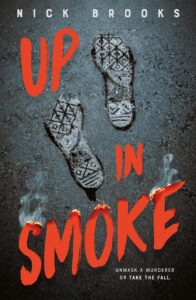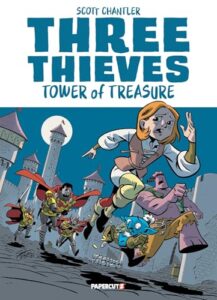Happy May, dear readers! I’m in the hard middle of Performance Season, but at least I have a whole bunch of terrific upcoming reads to keep me company as I gallivant around the country.
 First on my list is the latest book from local-to-me author Nick Brooks, which I’m super looking forward to bingeing with another of his novels, Promise Boys. His latest YA mystery Up In Smoke has two protagonists: one desperate to clear her brother’s name, and the other just as intent on keeping his own out of the spotlight.
First on my list is the latest book from local-to-me author Nick Brooks, which I’m super looking forward to bingeing with another of his novels, Promise Boys. His latest YA mystery Up In Smoke has two protagonists: one desperate to clear her brother’s name, and the other just as intent on keeping his own out of the spotlight.
After Cooper King is pressured by his big brother figure Jason to go on a looting spree during a local march, the unthinkable happens. Gunshots ring out and someone ends up dead. Cooper flees, but the news shows four teens in ski masks — Cooper and his friends — near the scene of the crime. Cooper fears that the cops will soon come knocking at his door. The pressure only mounts when Jason is taken into custody as a murder suspect.
Monique, Jason’s sister and Cooper’s longtime crush, will do whatever it takes to clear her brother’s name. If it means going into the belly of the beast and confronting the real killer herself, then so be it. When she teams up with Cooper, they begin to fall down an investigative rabbit hole… and to fall for each other.
But little does Monique know that Cooper is hiding the truth about his own whereabouts when the gun went off. If the pair fail to unmask the real murderer, Jason will get locked up for a crime he didn’t commit — and Cooper will most likely go down with him.









